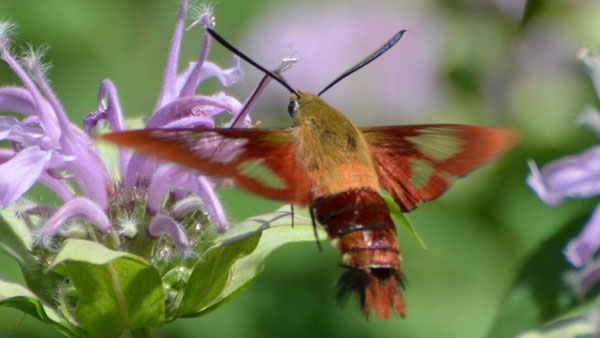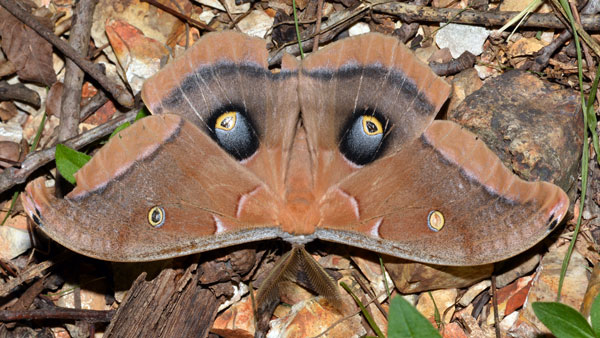Moths as pollinators
There is a whole world of pollination that goes largely unseen, as it occurs under the cover of darkness. Many of our native moth species gather pollen and nectar by the light of the moon, supplementing the work of day time pollinators like butterflies and bees. Although the importance of pollination by moths is sometimes overlooked, moths play an important role in the long distance transfer of pollen among plants.
The key to spotting the difference between a moth and a butterfly is in the wings and antennae. Moths have straight or feathered antennae, and their wings lay flat and to the side when they are at rest. Butterflies have clubbed antennae and hold their wings upright while at rest.
Watch for these moths on your backyard.
Moth-friendly Yards
Moths prefer gardens with a mix of trees, shrubs, grasses and flowers. Consider using mulch in your flowerbeds and leaving leaf litter and plant clippings in your yard. This provides shelter for adult moths and winter habitat for moth larvae.
Reduce or eliminate lighting in your yard at night, as artificial light reduces the efficiency of nocturnal pollinators. Save energy and pollinators by incorporating motion sensor lights into your yard.
Hummingbird Clearwing Moth

This daytime moth is so large it is often mistaken for a hummingbird. Common in gardens throughout Alberta, this moth hovers in front of flowers while drinking nectar, much like its namesake.
Hummingbird Clearwing moths are able to access nectar from flowers with deep blooms, and are excellent at pollinating a variety of native wildflowers including vetch and clover.
Polyphemus Moth

Although found throughout Alberta, the Polyphemus moth is rarely seen, as it is nocturnal. During the day these moths hang from branches, with their wings folded.
The eyespots on the wings of the Polyphemus moth act as a defense mechanism. If disturbed while resting, the moth drops to the ground and flashes the spots on the top of its wings in an attempt to ward off a potential predator.
Photos courtesy Chrissy McClarren and Andy Reago

